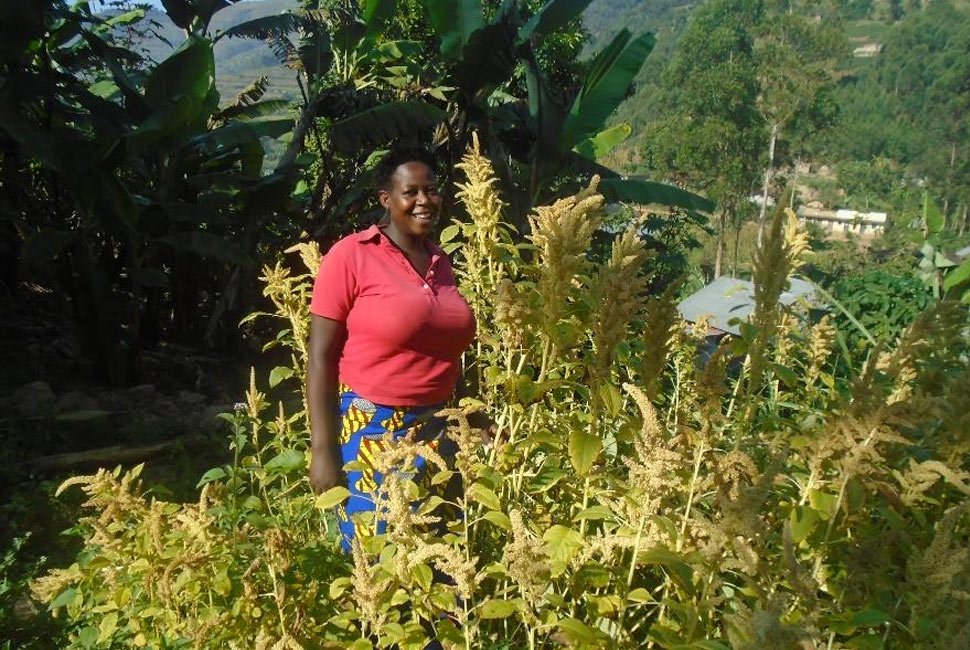
Amaranth’s Nutritional Value is Restoring Health
Phiona’s involvement in the Kabale food security program was a turning point in her life when she learned to grow, cook and eat amaranth. As a farmer living with HIV who was frequently sick from infections due to poor nutrition, her ability to work was severely affected.
Phiona says, “Two years ago, I lost 75 pounds, my white blood cell count was very low, and I didn’t have much energy for farming, even though I depend on farming as my sole livelihood and to care for my child.”
She managed to attend training on growing and cooking amaranth and received seeds to plant. As soon as her amaranth leaves turned green, she started eating them as a cooked vegetable similar to spinach, and began to feel stronger. Her health continued to improve when she added the grain to her diet.
Phiona’s face lit up when she said, “When I began to eat amaranth, my energy was restored, and my life turned completely around! My weight’s back up to normal, and my blood cell count has more than doubled. I like amaranth best when it’s popped first; then I stone grind it into flour. I mix some of the flour into whatever food I eat, or add it to maize or millet flours for porridge and bread. It is delicious!”
Amaranth has been shown to improve nutrient intake and white blood cell counts, so local partner PAG South Western Uganda continues to promote its use, especially among farmers affected by HIV and AIDS.
Caption: A healthy Phiona with amaranth plants
Uganda Kabale Program
Led by World Renew and Local Partner PAG South Western Uganda
Note: Phiona gave her permission to reveal her HIV status in this story
